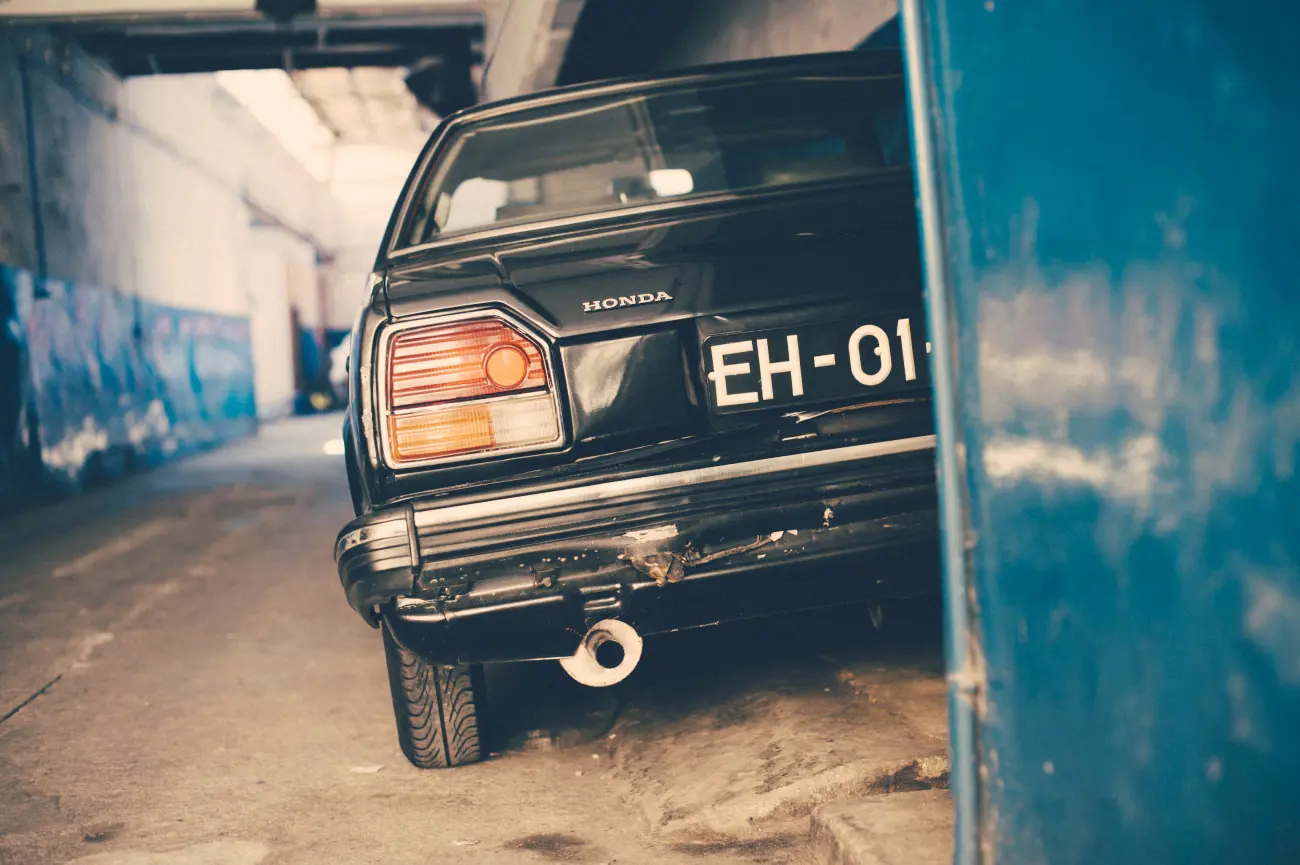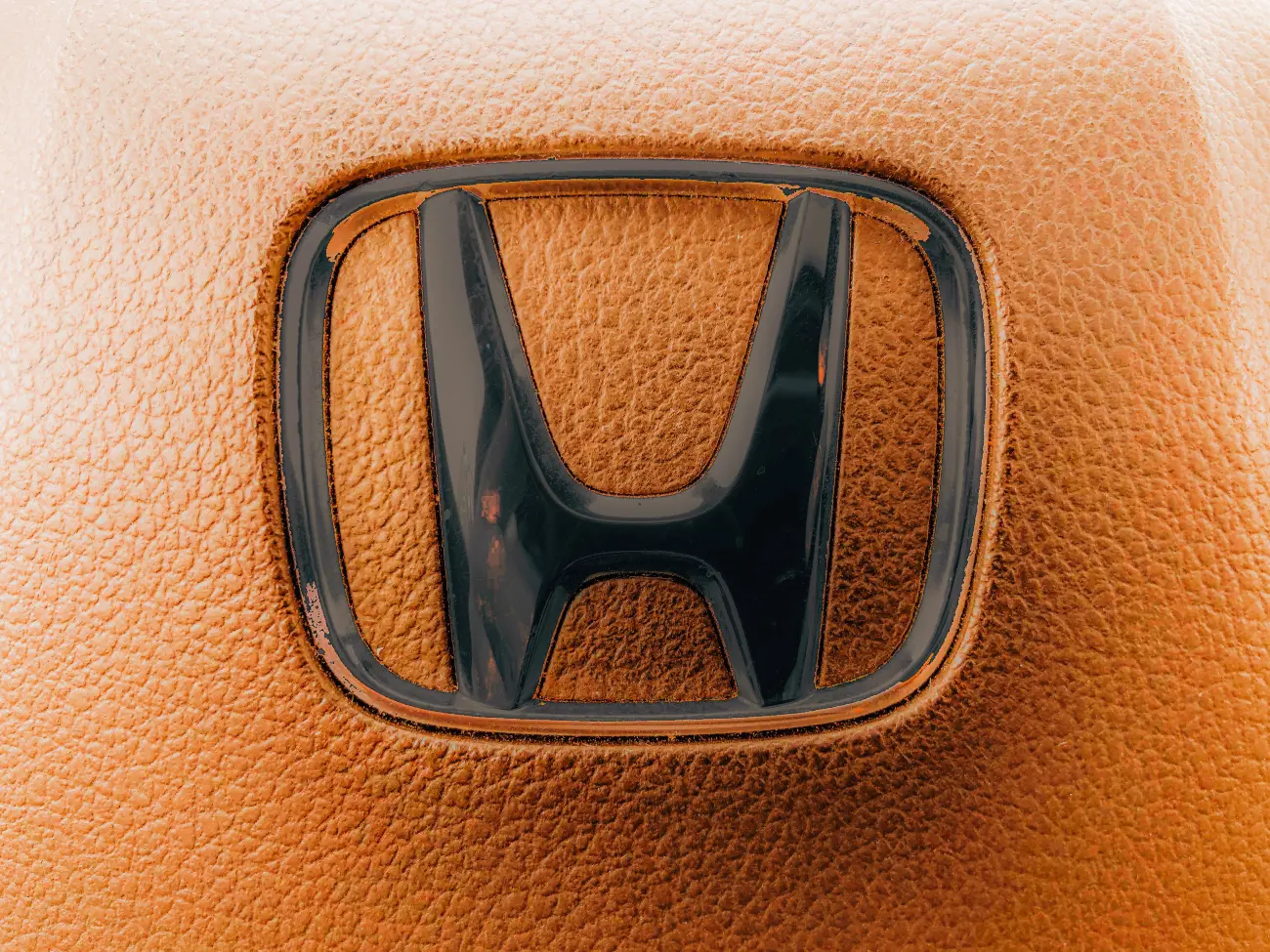Classic Hondas we love
15 December 2021
Some of the world's most successful car marques have carved out their own distinctive niches in the public imagination. For many of the Italian makers, for example, beauty of design is key. Elsewhere, Renault and Citroen are known for a certain boldness to their creations.
Something similar can be said of Honda, which in its relatively short history (it only properly came into being in 1949) has dedicated itself to some quite brilliant feats of engineering, whether out on the F1 track or in the car showroom.
Among its road cars, whether it's a pioneering hybrid or a supercar that dared to rival the Italians, Honda has always displayed some brilliant engineering ideas and a willingness to push the envelope.
Here are eight of our favourites from the Honda back catalogue, all great contenders for some classic car insurance.

Honda Insight
Honda has a history of being bold and adventurous with both their designs and engineering. And nowhere is this seen better than in the Insight, the Japanese marque's ground-breaking hybrid-electric vehicle (HEV).
The world's first mass-produced HEV, beating the Toyota Prius to market by a few months, the Insight was based on the J-VX hybrid concept, which made its debut at the Tokyo Motor Show way back in 1997. That car's complex systems took a while to perfect, and the Insight eventually reached Japanese showrooms in 1999 – and the UK the following year.
Its three-cylinder, 1.0-litre engine produced 67bhp – perfectly serviceable for this lightweight vehicle, especially when the hybrid tech (or Integrated Motor Assist) kicked in, supplying another 13bhp. What's more, the latter also acted as a generator, recharging the battery while the car slowed or braked.
Couple all this clever tech with the Insight's low-drag factor design – such as that partially covered rear wheel, calling to mind certain Citroens from the past – and the use of weight-saving plastics, and you got mileage typically somewhere between 60 and 80mpg.
The technology still serves the car well today, and as such a Mk1 Insight would make a great used buy. You'll pay peanuts for fuel – and you'll have the bonus of owning a significant chapter in automotive history.
Just be aware that this pioneer car's complex mechanicals can make it costly to repair and, as a result, to insure – so it's worth shopping around to get the best classic car insurance deal.
Honda S800
The 1960s were a golden era for the light, nimble, soft-top two-seater. And, while this was largely a British speciality – thanks to icons like the Lotus Elan, Triumph Spitfire and MG MGB – other nations were getting on the act as well.
France gave us the Renault Caravelle and the drop-top form of the Peugeot 404; Italy's contributions memorably included the Alfa Romeo Spider and the Ferrari 250 GT Cabriolet. Not to be outdone, Honda arrived at the table with the small, simple and completely charming S800.
This was a car built to fit some very particular Japanese needs. Honda first designed a two-seater for Japan's kei car class – those cars whose small engines and dimensions gained them entry to the lowest road tax band.
Thus, the marque's very first S cars were the 500 and 600, whose model numbers should give you a clue to their pint-sized engines. The engine got uprated to 800cc (791cc to be exact) for international markets – and, when engineered to function best at high revs, this little unit could propel the tiny S800 around at speeds of 100mph or more, with an impressive fuel economy (for the time) of 35mpg.
The S800 was produced in both roadster and coupé forms. It didn't sell internationally like its rival the MGB – but it certainly showed the world what Honda could do. And for that, anyone who loves adventurous engineering should love this car, too.
Honda NSX
A select few models have changed the way the world viewed Japanese cars. The Lexus LS400, for example, proved to the world that they could do luxury as well as the Germans. A few years later, the Mazda MX-5 evoked glorious memories of the 1960s golden age of British roadsters – the Lotus Elan, MG, Spitfire and so on. The Honda NSX, the first Japanese supercar, belongs in this exalted company – for revealing to the world that Japan could produce a genuine Ferrari rival.
With engineering input from the great Ayrton Senna, the NSX emerged in 1990 as quite simply the best all-round supercar on the market at the time. Blisteringly quick (of course), it was also surprisingly practical, and blessed with its parent company's legendary reliability.
Oh, and – despite its supercar looks and performance – really very easy to drive, too.
The car's V6 engine (naturally aspirated, in the middle of an era where turbocharging was near ubiquitous) was a particular masterpiece. Honda were clearly onto something, though, as that decision delivered a pure throttle response with no turbo lag.
And what a response. With its 24 valves, four camshafts and VTEC technology, the engine produced 270bhp when running at 7,300 rpm.
The NSX is a lovely thing to sit in, too. The low-slung seating position, great visibility, and a dashboard and centre console that sweep around you, cockpit-style, all make you want to achieve great things in this car.
No wonder that the NSX now commands a significant cult following. Used examples are prized, and any NSX you are lucky enough to pick up will need to be protected with some classic car cover.

Honda S2000
Nearly 30 years passed between the MG / Spitfire-rivalling S800, and its 'successor', the brilliant S2000. However, the three-decade wait turned out to be worth it, as the S2000 was – in typical Honda style – beautifully engineered and just the right side of crazy.
The roadster drew 240bhp from its two-litre engine and revved up to a redline of 9000 revs per minute. Yes, as well as looking good and providing those all-important wind-in-the-hair thrills, the S2000 was a completely involving drive.
Like its near-contemporary, the Insight, the S2000 had a longish wait from drawing board to showroom. The concept version – the functionally-named Sports Study Model – was first unveiled at the 1995 Tokyo Motor Show, then taken round to various shows for the next few years.
That car's rigid, X-bone frame, which delivered excellent rigidity and collision safety, made it into the production version. The five-cylinder engine did not, being replaced by a four-cylinder. No complaints there, though, as the S2000 became well known for its (claimed) power output of around 124hp per litre, or about two horsepower per cubic inch – thought to be the greatest power to engine ratio of any mass-production, naturally aspirated car.
The car got stability control in 2006, meaning that a second-gen S2000 is slightly less twitchy on the road than its predecessor. The high-revving VTEC engine is exciting stuff, and the manual gearbox a brilliant performer. Another feather in the S2000's cap is its perfect 50:50 weight distribution (the engine sits behind the front axle), making for excellent handling.
An S2000 makes a great used buy as it's blessed with Honda's legendary reliability. The engine may have been worked hard but, providing it's been serviced properly, it'll still be reliable. The rust prevention wasn't all that great, so do get the car inspected on a ramp. And, as with any car of this vintage, classic motor insurance is the route to go down when it comes to protecting your S2000, especially if you’re thinking of only taking it out on sunny days.
Honda Civic Mk2
When it arrived on our shores in 1973, the very first Civic was a small revolution in car design – with the emphasis on 'small'.
The car arrived at the perfect time, with the '73 oil crisis driving up prices and drivers migrating from their larger, fuel-guzzling cars into smaller, economical models. As such, the Civic was one of the first of the new class of 'supermini' cars, alongside the likes of the Fiat 127, Renault 5 and Datsun Cherry.
However, the car was not without its issues – chief among them firm suspension, a cramped interior, and that devil of '70s Japanese cars, rust. As such, when it came along in 1979, the second-gen Civic delivered improvements on all sorts of levels.
A roomy interior and more forgiving suspension were joined by two new, smooth-running and economical 1335cc and 1488cc engines. Meanwhile, the Civic S variant, from 1983 onwards, entered the small but interesting 'warm hatch' market alongside the likes of the Austin Metro MPI and Talbot Samba S.
In time, the hatchback was joined by a small estate and a four-door saloon. The latter subsequently got a facelift, becoming the…

Honda Ballade
The rather nice-looking Honda Ballade evolved as an upscale reinterpretation of the Mk2 Civic saloon. The name began a period of musical associations for Honda cars, which also took in the Quintet hatchback, Prelude coupé and Jazz supermini.
Most significant about the Ballade, however, was not its musical etymology but, rather, its links with Triumph. The car was launched in September 1980 – nine months after British Leyland had agreed a joint project with Honda, to each produce their own versions of this platform and to continue collaborating in future.
Triumph's version of the Ballade was, of course, the handsome and well-equipped Acclaim saloon. That car's place in history is assured, as it was the last model produced by Triumph before BL retired it in 1984.
The Honda / BL partnership carried on for a while, of course, via joint projects such as the Honda Legend / Rover 800 Sterling duo, not to mention the Ballade's own second generation and its sister car, the Rover 200.
Honda Accord Mk3
The Honda Accord has been through many generations – and many body styles and market sectors, including saloons, estates, hatches, and coupés. Whatever form it's come in, though, the Accord has consistently sat one or two notches further up the Honda pecking order than the Civic.
Of its many guises, here we're nominating the Mk3 from 1984-1989 – and it's here largely because of its striking wedge-shaped looks and (that 1970s / 1980s signature) pop-up headlamps.
This generation of the Accord was a major step forward from the Mk2, which itself had moved on only subtly from the 1976 first generation. It was also bigger than its predecessor and got a wider range of equipment – with an extensive options list including such pioneering luxuries as climate control, cruise control and heated seats. Technically, things moved on as well, with the introduction of double-wishbone suspension, multi-valve engines, and – on the higher-spec models – anti-lock brakes.
Body styles around the world include a two-door coupé and three-door hatchback. We practical Brits got the three-door' 'shooting brake'-style Aerodeck, which conjured up memories of the iconic Reliant Scimitar GTE.
That combination of wedgy estate looks fashion-forward optional extras and pop-up 'lamps made the Mk3 Accord something of an object of desire in late '80s Britain. And rightly so.
Honda CR-X Mk2
Launched in 1983, the first generation of Honda's petite CR-X coupé seemed to be filling the gap in the market vacated by the recently departed Triumph TR7 and MG MGB. Here was a nifty-looking, lithe, agile two-seater, whose 1.5 and 1.6-litre engines could be pushed hard by their drivers, confident in the knowledge that there were some bombproof Honda mechanicals at work in there.
Much as they had done with the Civic a decade before, Honda delivered some key improvements with the second generation when it appeared in 1987. Reworked suspension made for a better ride / handling balance, while the 16-valve, 1.6-litre engine got a small but significant power upgrade, from 125 to 130bhp (achieved at a redline-approaching 6800rpm). There were some nice features introduced for this generation, too, including air-conditioning and (on the sporty Si variant) a power sliding sunroof, rack-and-pinion steering, and disc brakes.
Any caveats? Well, it's somewhat cosy inside, and probably not the best for tall drivers, and it shares the Mk1's slight propensity to rust. These small reservations aside, the Mk2 CR-X is a great-looking, fine-driving car that would make a brilliant weekend classic.
Classic car insurance for vintage Hondas
Whether it's a beautiful design from the dawn of the hybrid era, or a Ferrari-rivalling supercar, Honda have produced some absolute gems, many of them now enjoying classic status.
We take pride in providing car insurance for classics like these – and for so many other makes and models besides.
Contact us for a quote today.
